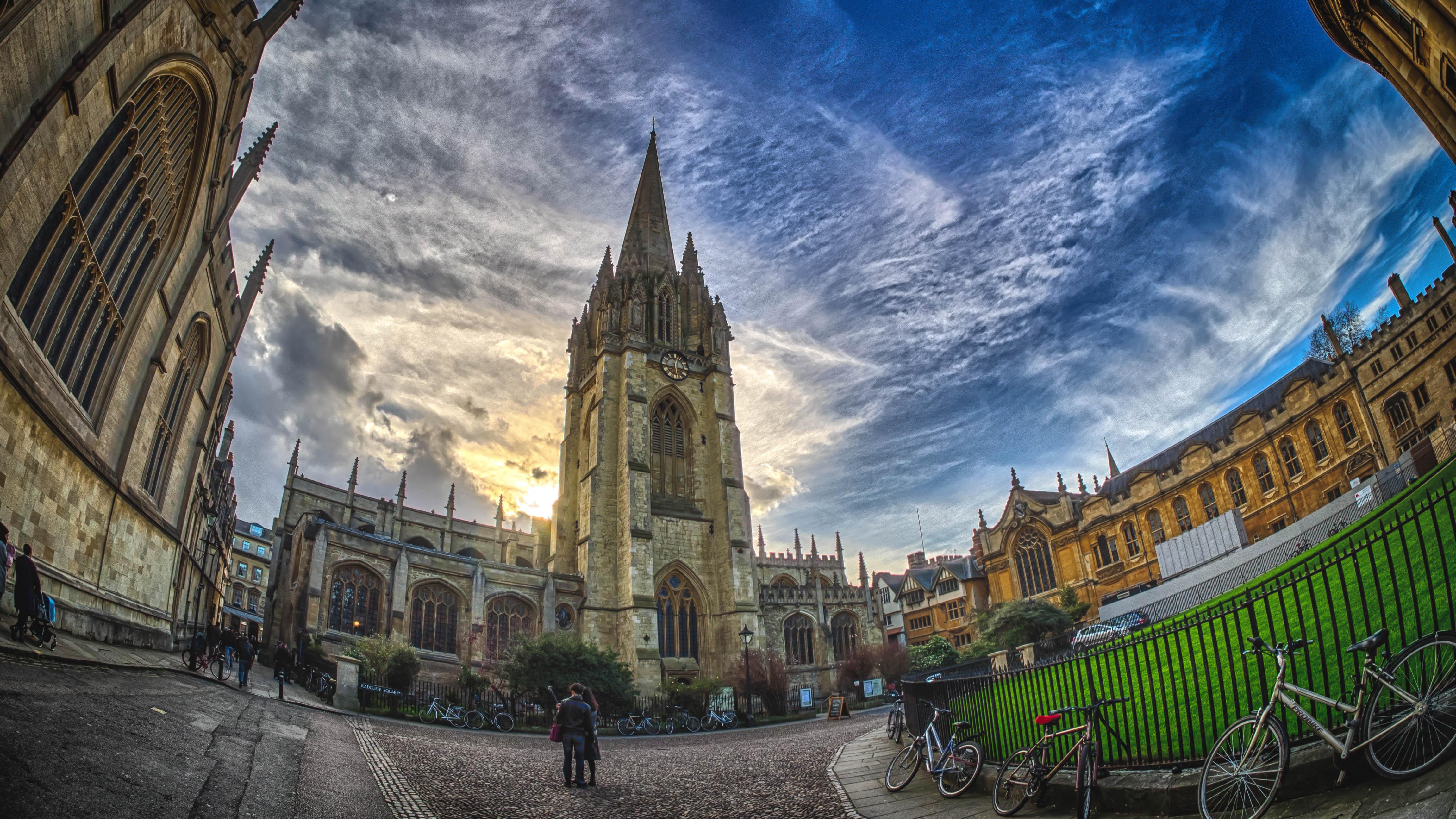St Columba
Oxford, Oxfordshire
Oxford's central United Reformed Church, dating to 1915.

There has been a church on this site for a thousand years, standing in the very centre of the ancient walled city of Oxford.
Oxford, Oxfordshire
In the early 13th century the University began to develop as scholars and teachers, with their classes of scholars, moved into small halls of residence here. They needed a central meeting place and they came to this church, using it for academic lectures as well as for Christian services. Indeed, even the University’s court, treasury and library were housed here for a time: and that is how a parish church of St Mary became University Church.
By about 1420 the church had become too small for all these activities. Gradually the University moved its lectures, library and official ceremonies to other buildings nearby, especially the Bodleian Library and Sheldonian theatre, on the other side of Radcliffe Square. But the importance of the church did not diminish and it is still the site for major events, within the University, the city of Oxford, and the national church.
In 1556 Thomas Cranmer, the first Protestant Archbishop of Canterbury, was tried in University Church. One of the pillars in the nave is damaged, and it is thought that this happened when a platform was built for the trial. Cranmer’s trial was organised by the government of the Roman Catholic Queen Mary, who detested Cranmer’s Protestant religion. Moreover, Cranmer had encouraged Mary’s father King Henry VIII to divorce her mother, Catherine of Aragon. Cranmer was responsible for the new English Prayer Book and for many of the Protestant changes to the Church; when Mary came to the throne she was determined to destroy him. At his trial, he refused to abandon his faith and in March 1556 he was burned at the stake on Broad Street, just round the corner.
John Wesley, founder of Methodism, often attended University Sermons while an undergraduate and then a Fellow of Lincoln College. After an intense religious experience in 1738, he sought to reignite the church’s sense of missionary purpose. He preached some of his most famous sermons before the University, to rapt and sometimes indignant audiences. In 1744, he denounced the laxity and sloth of the senior members of the University here, and was never invited to this pulpit again. ‘I have preached, I suppose,’ he wrote, ‘the last time in St Mary’s. Be it so. I am now clear of the blood of these men. I have fully delivered my soul.’
In the early 19th century, many Oxford scholars believed that the church was losing its connection to its history and wanted more ceremony, more decoration and a greater sense of holiness. In a series of sermons from University Church pulpit, they preached about the need for renewal. They became known as the Oxford Movement. The vicar of University Church, John Henry Newman, was one of the leaders of this group and his sermons were very famous and well attended. Eventually he decided to convert to Roman Catholicism and left the Church of England. In 2010 the Catholic Church recognised the influence of Newman by ‘beatifying’ him. But the Oxford Movement also made a big impact on the Church of England, encouraging people to see the church as a place of art and beauty. The stained glass in our nave, for example, was put in soon after Newman left.
Oxford, Oxfordshire
Oxford's central United Reformed Church, dating to 1915.
Oxford, Oxfordshire
When William of Wykeham, Bishop of Winchester, founded New College at the end of the 14th century, he placed the service of God at the heart of college life.
Oxford, Oxfordshire
Christ Church College in Oxford is unique in having the only college chapel that is also a cathedral, founded as a convent by St Frideswide in the 8th century, but the oldest parts of the church date from the 12th century, when it was place of pilgrimage.